How to Cable Knit: A Tutorial
•Posted on September 21 2023

If you’ve ever admired the beautiful, intricate patterns produced by cable knitting, you know that it may seem daunting to learn. But never fear.
Cable knitting is waaaaaaay easier than it looks!
If you can knit and purl, you can cable. Trust us.
To prove it's true, we created an awesome, in-depth video tutorial to show you how to cable knit. It provides the ins and out of knitting 2/2 cables, plus some awesome tips and tricks to help set you up for success.
But first, there's one tool that can make your life so much easier when it comes to knitting cables.
Top Tools for Easy Cables
Cable needles are the go-to tool for knitters learning how to knit cables. They provide you with a secure place to hold your stitches while reversing positions.
Cable needles come in so many shapes, sizes, and materials. Each have their own pro's and con's.
We chose to use bamboo for our 2 cable needles because it's sustainable and it's sticky--meaning your stitches won't slip around.
The Bamboo Cable Needle
It comes in 3 different sizes, each with a distinct bend in the center. This dip helps keep the stitches secure during the cross.
The polished bamboo makes it the slipperier of the two options, which makes it faster (and my favorite) but also slightly less secure.
So if the thought of dropping stitches makes you panic then we suggest...
The Grooved Bamboo Cable Needle
Your stitches aren't going ANYWHERE with the grooved cable needle. Not only do your stitches sit securely in the 5 grooves, this unpolished needle is much more grippy.
It may make working cables a little slower, but the wait can be well worth the peace of mind.
(If you're feeling super adventurous, you can try cable knitting without a cable needle 😱)
So grab your cable needle of choice, some yarn, and press play. Let’s get cabling!
How to Cable Knit Video Tutorial
Does reading help you piece it all together in your head? We're right there with you! Read on for more explanations and tips.
Top Tips for Cable Knitting
Cable Needle Position
When you've slipped your stitches onto a cable needle, it can be hard to remember where to put it.
Is it front? Is it back? Which way am I supposed to go?!?!
Don't worry. It just takes time, but these 4 words helped me a ton.
Right Back
Left Front
How to Cable Knit with Purls
Purl stitches go in back. It's really that simple. No matter which way you're crossing, whichever stitches will end up crossed behind are the stitches that you purl.
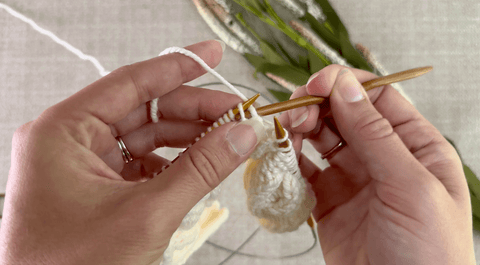
The Cable Knit Stitches: A Mini Glossary
k - knit
p - purl
CN - cable needle
LN - lefthand needle
2/2RC - A right-cross cable worked over 4 sts - Slip 2 st to CN and hold in back; k2 from LN, then k2 from CN
2/2LC - A left-cross cable worked over 4 sts - Slip 2 st to CN and hold in front; k2 from LN, then k2 from CN
2/2RPC - A right-purl-cross cable worked over 4 sts - Slip 2 st to CN and hold in back; k2 from LN, then p2 from CN
2/2LPC - A left-purl-cross cable worked over 4 sts - Slip 2 st to CN and hold in front; p2 from LN, then k2 from CN
Practice How to Cable Knit

Prefer written instructions for your cable knit practice? Here you go!
CO 46 sts. (You'll begin knitting on the WS.)
Rounds 1 - 2: K1, (p4, k2, p2, k2) × 4, p4, k1.
Round 3: Sl, (p4, k2, p2, k2) × 4, p4, sl.
Round 4: K1, (p4, 2/2 LC, k2, p4, k2, 2/2 RC) × 2, p4, k1.
Round 5: Sl, (p4, k6) × 4, p4, sl.
Round 6: K1, (p4, k2, 2/2 LPC, p4, 2/2 RPC, k2) × 2, p4, k1.
Round 7: Repeat round 3.
Round 8: K1, (p4, k2, p2, 2/2 LPC, 2/2 RPC, p2, k2) × 2, p4, k1.
Round 9: Sl, (p4, k2, p4, k4, p4, k2) × 2, p4, sl.
Round 10: K1, (p4, k2, p4, 2/2 RC, p4, k2) × 2, p4, k1.
Round 11: Repeat round 9.
Round 12: K1, (p4, (2/2 LPC, 2/2 RPC) × 2) × 2, p4, k1.
Round 13: Sl, p6, k4, p4, k4, p8, k4, p4, k4, p6, sl.
Round 14: K1, p6, 2/2 LC, p4, 2/2 LC, p8, 2/2 LC, p4, 2/2 LC, p6, k1.
Round 15: Repeat round 13.
Round 16: K1, (p4, (2/2 RPC, 2/2 LPC) × 2) × 2, p4, k1.
Round 17: Repeat round 9.
Round 18: Repeat round 10.
Round 19: Repeat round 9.
Round 20: K1, (p4, k2, p2, 2/2 RPC, 2/2 LPC, p2, k2) × 2, p4, k1.
Round 21: Repeat round 3.
Round 22: K1, (p4, k2, 2/2 RC, p4, 2/2 LC, k2) × 2, p4, k1.
Round 23: Repeat round 5.
Round 24: K1, (p4, 2/2 RPC, k2, p4, k2, 2/2 LPC) × 2, p4, k1.
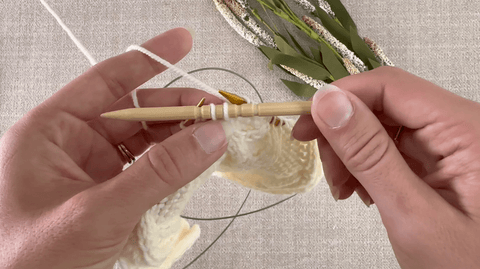
Round 25: Repeat round 3.
Round 26: K1, p4, k2, p2, k2, p4, k2, p2, 2/2 LPC, 2/2 RPC, p2, k2, p4, k2, p2, k2, p4, k1.
Round 27: Sl, p4, k2, p2, (k2, p4) × 2, k4, (p4, k2) × 2, p2, k2, p4, sl.
Round 28: K1, p4, k2, (2/2 RC, p4, k2, p4) × 2, 2/2 LC, k2, p4, k1.
Round 29: Sl, p4, k6, p4, k2, p4, k4, p4, k2, p4, k6, p4, sl.
Round 30: K1, p4, 2/2 RPC, k2, p4, (2/2 LPC, 2/2 RPC) × 2, p4, k2, 2/2 LPC, p4, k1.
Round 31: Sl, p4, k2, p2, k2, p6, k4, p4, k4, p6, k2, p2, k2, p4, sl.
Round 32: K1, p2, 2/2 RPC, p2, k2, p6, 2/2 LC, p4, 2/2 LC, p6, k2, p2, 2/2 LPC, p2, k1.
Round 33: Sl, p2, k2, p4, k2, p6, k4, p4, k4, p6, k2, p4, k2, p2, sl.
Round 34: K1, p2, (k2, p4) × 2, (2/2 RPC, 2/2 LPC) × 2, (p4, k2) × 2, p2, k1.
Round 35: Sl, p2, (k2, p4) × 3, k4, (p4, k2) × 3, p2, sl.
Round 36: K1, p2, 2/2 LPC, 2/2 RPC, p4, k2, p4, 2/2 RC, p4, k2, p4, 2/2 LPC, 2/2 RPC, p2, k1.
Round 37: Sl, p4, k4, p6, k2, p4, k4, p4, k2, p6, k4, p4, sl.
Round 38: K1, p4, 2/2 LC, p6, k2, p2, 2/2 RPC, 2/2 LPC, p2, k2, p6, 2/2 LC, p4, k1.
Round 39: Sl, p4, k4, p6, k2, p2, k2, p4, k2, p2, k2, p6, k4, p4, sl.
Round 40: K1, p2, 2/2 RPC, 2/2 LPC, p4, k2, 2/2 RC, p4, 2/2 LC, k2, p4, 2/2 RPC, 2/2 LPC, p2, k1.
Round 41: Sl, p2, (k2, p4) × 2, (k6, p4) × 2, k2, p4, k2, p2, sl.
Round 42: K1, p2, (k2, p4) × 2, 2/2 RPC, k2, p4, k2, 2/2 LPC, (p4, k2) × 2, p2, k1.
Round 43: Sl, p2, k2, p4, (k2, p4, k2, p2) × 2, (k2, p4) × 2, k2, p2, sl.
Round 44: K1, p2, 2/2 LPC, (p2, k2, p4, k2) × 3, p2, 2/2 RPC, p2, k1.
Round 45: Sl, (p4, k2, p2, k2) × 3, p4, k2, p8, sl.
Round 46: Repeat round 4.
Round 47: Repeat round 5.
Round 48: Repeat round 6.
If At First You Don't Succeed...
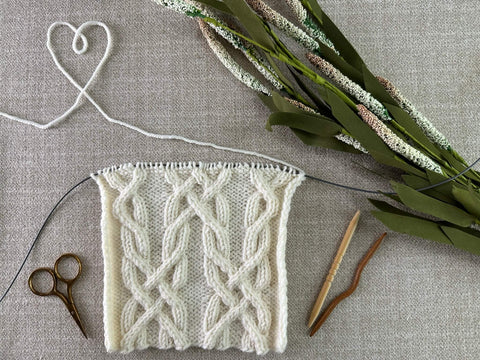
We love a good cable here at Thread & Maple, but not everyone does. However, we encourage you not to make that determination after your first attempt!
Any time you try something new, it's likely to feel difficult and/or uncomfortable. It'll take at least 3 tries for you to start getting used to the movements and maybe find that you like cable knitting after all!
So now that you know how to cable knit, give it a try!
Run into a question? Give us a shout in the comments below!
Love,

More Posts
-
Massive (Re)Stock -...
Do you love yarn? Thought so! That's why we got 23 of Louie & Lola's best new & returning colorways. (And lots of new & restocked croch...
Read More -
Set Sail with Sakvo...
Drawing inspiration from the classic doctor's bag, this stylish project bag is reimagined with contemporary lines and fabulous colors, designed spe...
Read More -
The Crochet Hook Bi...
The moment you've all been waiting for has finally arrived – we're thrilled to unveil the Crochet Binder complete with fabulous Crochet Pages to ...
Read More

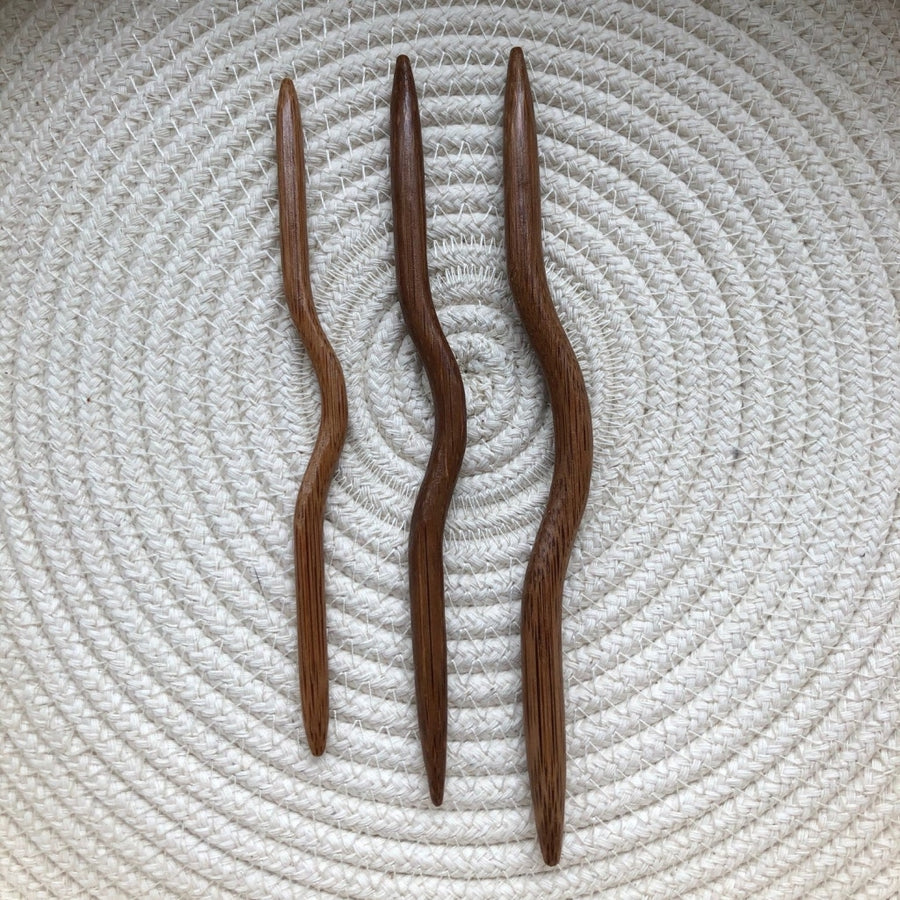
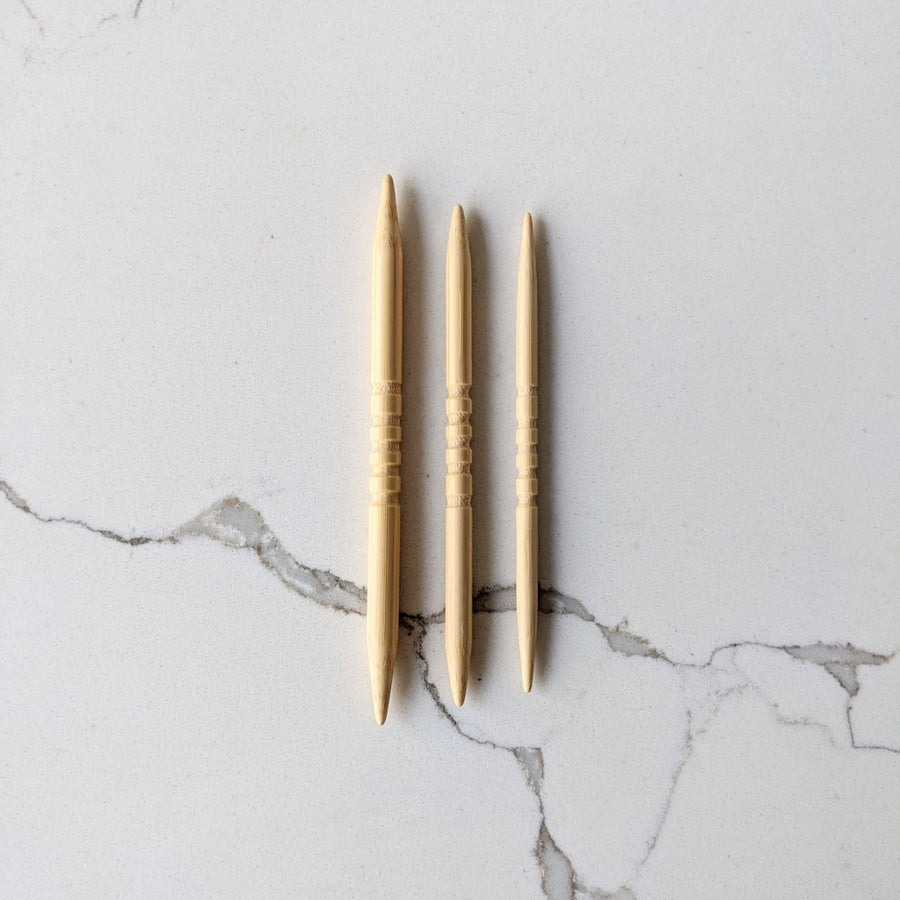



Comments
0 Comments
Leave a Comment